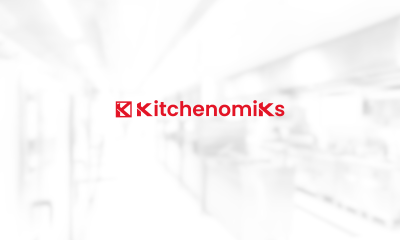Economy
What Is Heatflation & How Will It Drive Up Food Prices?

Soaring temperatures in Europe have impacted agricultural production and look set to have a knock-on effect on food costs. As warmer weather becomes the norm, will ‘heatflation’ become a regular occurrence?
Heatwaves in Europe in the past week have seen exceptionally hot weather wreaking havoc across the continent. In France, Greece, Spain and Portugal, temperatures above 40-degree-Celsius sparked wildfires that forced tens of thousands to evacuate from their homes.
In the UK, a record high of 40.3-degree-Celsius brought on travel chaos and fears of a health emergency.
Even when the heat has not caused obvious damage, the impact of such extreme weather can have a lasting effect, especially on food production. The result is likely to be ‘heatflation’ – unusually hot temperatures causing smaller harvests and rising food prices.
In Italy, for example, the mid-July heatwave was one in a series that has hit the country this summer. As a consequence, the agriculture union, Coldiretti, has warned that drought is threatening 30-40 per cent of the national seasonal harvest.
Throughout Europe, July’s heatwave hit at during a crucial pollination window for maize crops, threatening to reduce overall harvests and increase import needs. At the same time, experts forecast a decline in milk production that could last for weeks due to overheated livestock.
The impact of heatflation could be felt over the coming months. For grain crops such as wheat, rice and maize, prices on commodity markets are set in advance, based on forecasts of how successful a harvest will be.
“Any expectation that there’s going to be a shortage, however small or big, normally manifests itself in four to six months,” says Dominic Moran, a professor of agricultural and resource economics at the University of Edinburgh.
As harvest season has already started for much produce, the July heatwave did not damage as many crops as it could have. But in the current economic context, the impact of heatflation could still hit hard.
“We are in a food, energy and cost-of-living crisis, created by COVID-19,” says Professor Tim Benton, Director of the Environment and Society Programme at international affairs think tank Chatham House. “In a disrupted market – where demand globally is exceeding supply – any loss of harvest does not help prices,” France 24 News reported.
*This story was originally published in Oman News Agency
-

 News2 months ago
News2 months agoKitchenomiKs Secures Investment of US$3.2M Led by Jasoor Ventures
-

 Energy2 months ago
Energy2 months agoWLGA Middle East LPG Summit & Expo 2025 to be held at OCEC on November 10 and 11
-

 Real Estate2 months ago
Real Estate2 months agoAl Mouj Muscat Unveils Azura Beach Residences Phase 2: A New Chapter in Waterfront Living
-

 Leaders Speak1 month ago
Leaders Speak1 month agoDhofar International Development and Investment Company: Driving Sustainable Growth and Strategic Synergies in Oman’s Investment Landscape
-

 Events1 month ago
Events1 month agoOER Corporate Excellence Awards 2025 Honours Entities and Innovations in Oman
-

 Economy1 month ago
Economy1 month agoMaal Card: What Oman’s New National Payment Card Means for Everyday Users
-

 OER Magazines2 months ago
OER Magazines2 months agoOER, October 25
-

 Arts and Culture2 months ago
Arts and Culture2 months agoOminvest and Bait Al Zubair Launch “Future Frames” to Empower Youth through Art and AI






























